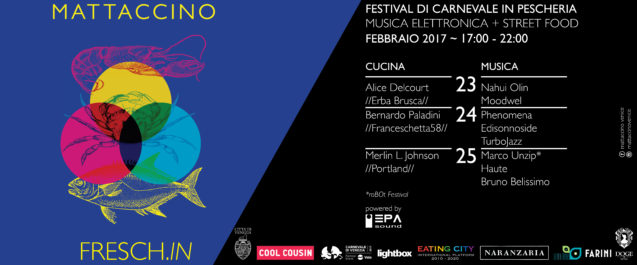Since the begining, Eating City aims to give life to ideas, to stimulate intellectual dialogue and to foster long term vision on the future of sustainable urban food supply chains worldwide. It is also action-oriented and shows evidences good practices and constructive propositions to shift the paradigm of food system.
In such frame, it introduces spirulina during Venice Carnival as gifted example of sustainable food of the future.

Why Venice?
Venice is, by its nature, morphology and history the ideal place to speak about algae and innovation, as in past centuries this city has been the entry point for so many spices and great innovations. Today it can strive to be forerunner of a new urban food system also based on the spirulina as source of proteins and other important nutrients.
Why the Carnival?
From its origin, the carnival has strong relationships with the food, as recalled by the etymology of the word Carnevale: “Carne Levare” (to remove meat). Spiruline high content of vegetarian proteins as well as precious nutrients all dressed with intense green does not deny Carnival’s history, for it has been characterized since the beginning by extravagance and abundance and provides an extra touch of resilience.
Why the spirulina?
Indeed, Spirulina is a microalgae, a phytoplankton and on of the first life form able to live in the inhospital conditions on Earth, about 3 and half billions years ago.
It belongs to the group of cyanobacteria, precursor of the photosynthesis, the first producers of O2 which allowed life to colonize seas and continents. Today as previously, plankton is having a key role, too little acknowledged, on ecosystems functioning and in particular on the trophic chain.
As we rediscover the value of traditions for our food and the impact of our meals on health, wellness, quality of life, environmental resilience, social cohesion and local development, the fitoplankton spirulina can also play its part also in such a frame …
Indeed to use spirulina to feed people is not a recent invention, at most a rediscovery, as shown by african women collecting it in the area of lake Chad and preparing small patties to eat with cereal but also the italian spacewoman Samantha Cristoforetti who gave preference to food prepared with high quality ingredients to bring with her on board of the International Space Station. She included the spirulina, rich of vegetal proteins with all essential amino acids, but also vitamins, minerals, etc…
And during the Fresch in festival, the same spirulina is invited as one of the ingredients of some of the sandwiches proposed to the visitors…Produced in a small farm with high quality standards, it gently refreshes our traditionnal recipes with a hint of innovation, whereas the phytotière, specially developed to allow a domestic production of spirulina opens new perspectives on our daily food.
Come and join us on 22, 23 and 25 february in Venice to know more: Facebook Event
Learn more about La Voie Bleue.
